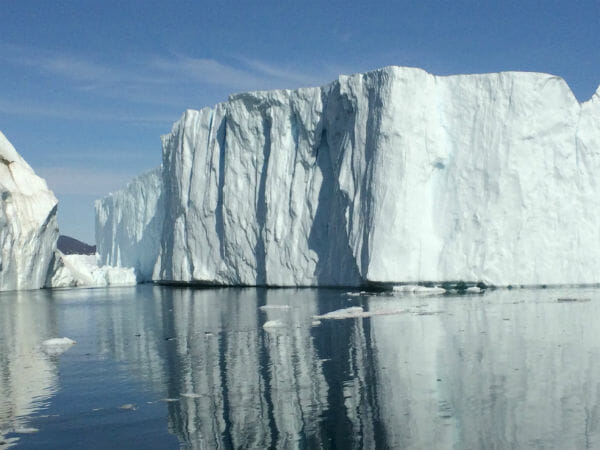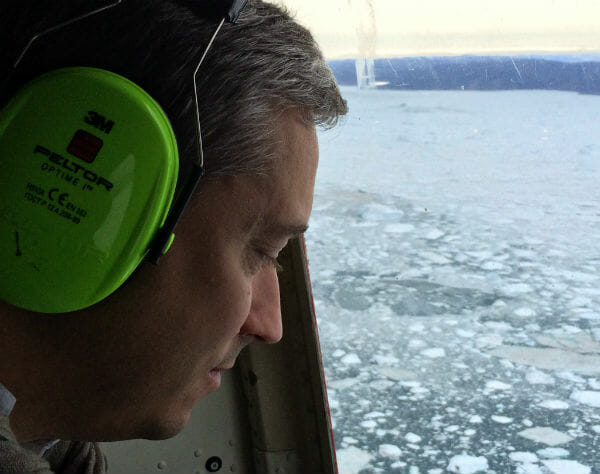A journey through the Arctic
July 5, 2014

Climate change is one of the great challenges of our time; it is a global issue, and the consequences are both visible and invisible to the eye. Fortunately, science and technology can help us tackle this challenge and, at the same time, help us build a greener economy.
Upon my return from the Ilulissat Icefjord, located in northern Greenland, I reflected on what I had experienced over the past few days; I spoke about climate change with experts like Dr. Robert Corell, a renowned climate scientist, and witnessed with my own eyes the impact that human-caused climate change is having on our planet. This incredible learning experience was organized by fellow Young Global Leaders of the World Economic Forum, and participants came from all walks of life. I cherished every minute I spent in the Arctic Circle. The beauty of nature, the immensity of the ice sheet, the icebergs in the Davis Strait of Baffin Bay, and the local Inuit community all left a lasting impression on me. I quickly realized that, like the Canadian Arctic, this is a pristine part of our planet that we need to better understand and protect. I would now like to share with you a few thoughts that have stemmed from my experience in the Arctic.
The science behind climate change is now well-established and it is clear that the changes occurring to our planet are demonstrably caused by human activity. Global carbon emissions from fossil fuels have significantly increased since 1900; in fact, emissions were 16 times higher in 2008 than they were in 1900.

The impact of climate change on humankind is already severe, and it will continue. With rising sea levels, droughts, and more extreme weather becoming commonplace, it is clear that we must act. Thanks to innovation and technology, we have the tools required to reverse this trend and to reduce our collective carbon footprint.
I was impressed to hear from the Danish foreign minister and a group of Danish business leaders about the so-called ‘Danish consensus,’ which has allowed Denmark to achieve remarkable economic growth and energy efficiency, without increasing its carbon dioxide emissions. It is a great example of how development and environmental sustainability can go hand in hand.
Throughout our discussions, it became clear that one meaningful way to achieve better energy efficiency is to adopt policies that will lead to innovation and the conservation of energy. About 40 percent of the energy we consume is used in residential and commercial buildings; as a result, higher energy efficiency standards in buildings, appliances, and lighting would make a real impact on the amount of energy we consume as a society. Encouraging people to adopt more eco-friendly lifestyles has proven to be effective in Scandinavian countries, and it is worth exploring here in Canada. Contrary to what the current government would like us to believe, there is a path to greener, more sustainable economic growth.
I am proud to be a part of the Liberal team and to work closely with our Leader, Justin Trudeau, to address these growing issues. Together, we will provide Canadians with new leadership on one of the greatest challenges of our time and work diligently to ensure the protection of our natural environment.
François-Philippe Champagne
Liberal candidate
Saint-Maurice—Champlain